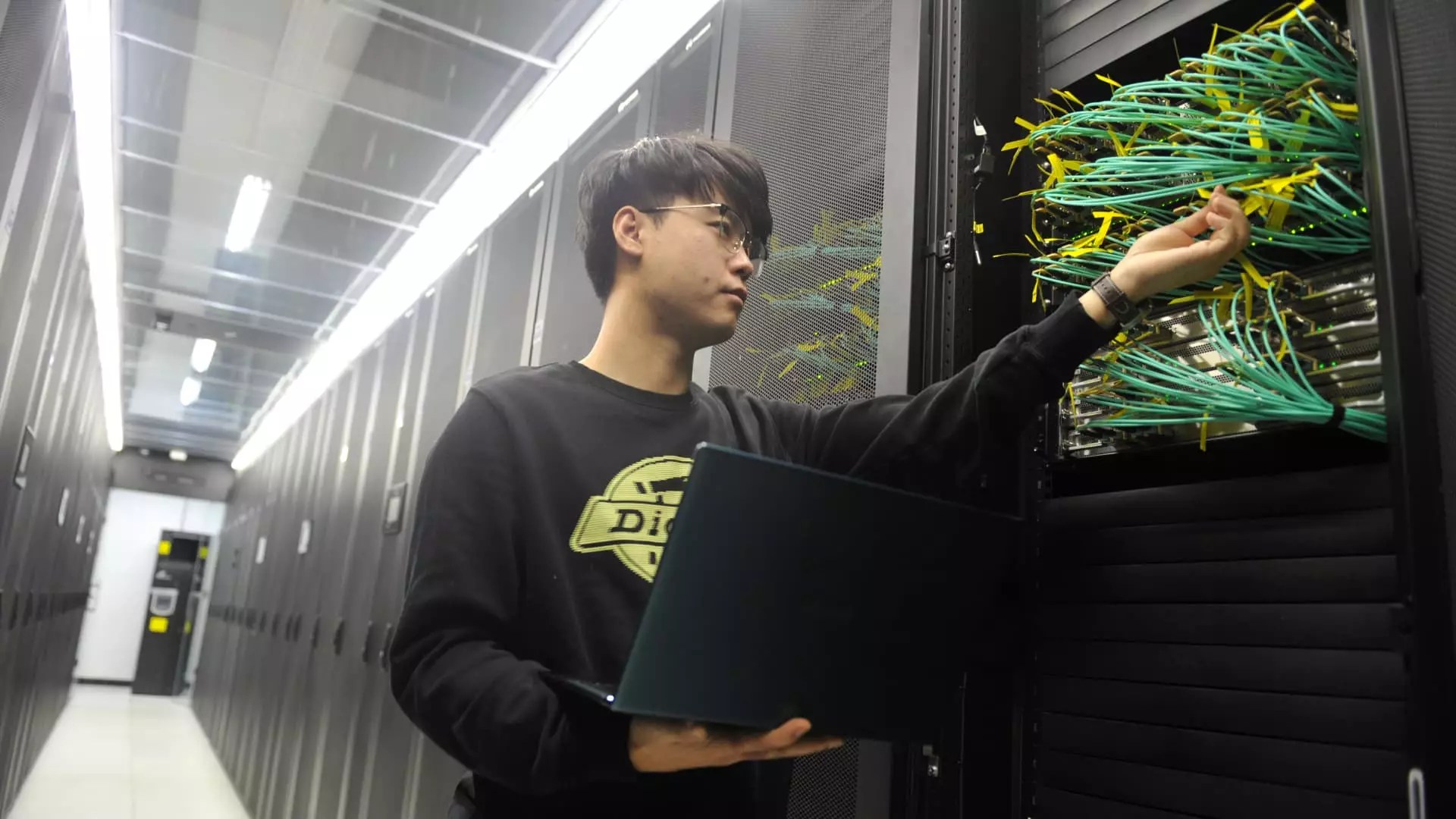It’s a turbulent time for U.S.-China relations, as escalating trade tensions threaten to unravel the delicate fabric of economic interdependence that has prevailed for decades. The stakes are particularly high amidst fierce competition in the realm of technology, where generative artificial intelligence (AI) has emerged as the latest battlefield. While the trade battles carry significant risks, they also present unprecedented opportunities for companies within China, particularly those poised to capture the transformative potential of AI technology.
Analysts from Bernstein suggest a glimmer of optimism amidst the uncertainty, contending that Chinese firms could potentially come out ahead as the government doubles down on investments in generative AI. The argument rests on a crucial premise: that demand for AI solutions will remain robust, driven by the need for businesses to adapt and evolve in a rapidly shifting marketplace, particularly as they seek to offset the adverse effects of U.S. tariffs.
Harnessing the Power of Innovation
One cannot help but admire China’s dogged pursuit of technological innovation, even amid mounting external pressures. Companies such as Kingsoft Office and Kingdee are at the forefront of this movement, leveraging AI to enhance their offerings and drive growth. Kingsoft’s word-processing application WPS has seen a significant uptick in user engagement—a staggering 19.68 million monthly active users—over the past year, thanks to its integration with powerful AI capabilities.
Kingdee’s pivot toward becoming a fully-fledged Enterprise Management AI company is similarly noteworthy. By proactively aligning their strategies with the ambitions of the Chinese government, these firms are positioning themselves not only to survive but to thrive in the face of adversity. The true question, however, is whether these strategies will be enough to withstand the onslaught of external market pressures and geopolitical strife.
The Government’s Role: A Double-Edged Sword?
There’s a critical distinction to be made regarding government intervention in the tech sector. While state support can be beneficial in bolstering domestic industries amid external pressures, such as tariffs, it can also lead to inefficiencies and stifle innovation in the long run. The recent results from Bernstein suggest that the Chinese government’s focus on the domestic AI ecosystem could mitigate some impacts from the tariff fallout. Still, one has to wonder: at what cost?
The potential for governmental influence to foster or hinder innovation remains significant. For example, local systems like the Huawei ecosystem are touted as worthy of external promotion. However, increased reliance on state-sponsored initiatives may also diminish the competitive edge possessed by private companies possessed by more agile, market-driven approaches.
The Uncertain Road Ahead: Economic Predictions
Research by the Economist Intelligence Unit forecasts that AI-related spending in China could surge by 25% annually. Nonetheless, the wild card remains the geopolitical climate, particularly as the U.S. and China continue to ramp up tariff threats against one another. Recent analyses from reputable sources like Goldman Sachs indicate that tightening trade conditions could significantly hamper economic growth, eroding any dividends derived from a burgeoning AI sector.
In a scenario where corporate earnings are buoyed by AI innovations yet overshadowed by creeping economic malaise, how will companies react? Will they double down on their AI investments, believing in its long-term potential despite immediate economic challenges? Or will they scale back as pressures mount, fearing a recession or further punitive measures from Western countries?
Cloud Computing: The Bright Spot Amidst Clouds of Uncertainty
In an environment filled with risk, sectors such as cloud computing emerge as glimmers of hope. With cloud companies like GDS and Vnet reporting promising growth metrics—both in terms of revenue and utilization rates—it appears that the appetite for digital infrastructure remains largely impervious to trade tensions. Analysts suggest that the rising demand for data processing power signifies a crucial shift in how Chinese businesses will operate moving forward, regardless of external challenges.
As investments continue to pour into AI and cloud solutions, one might ask: will these developments allow China to carve out a unique niche in the global technological landscape? The interplay of U.S.-China relations will certainly influence this trajectory, but it’s clear that Chinese enterprises are not waiting idly by—many are seizing the moment to assert their relevance on the world stage.
While trade wars and tariff tensions are redefining the landscape of international business, they may inadvertently fuel a relentless pursuit of innovation within China’s borders. The question remains whether this technological renaissance will fortify Chinese firms against external shocks or ultimately lead them into a quagmire of governmental overreach and stifled creativity. The next moves could determine not just economic trajectories but also the global balance of technological power.


Leave a Reply